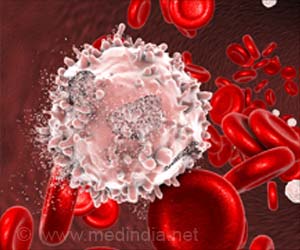According to a study Low doses of the drug mifepristone (also known as RU-486) shrinks the uterine fibroid tumors and greatly improves the quality of life in women
According to a study conducted by University of Rochester, Low doses of the drug mifepristone (also known as RU-486) shrinks the uterine fibroid tumors and greatly improves the quality of life in women. The study results were published in the December issue of the journal, Obstetrics and Gynecology.
Leiomyoma, the medical term for uterine fibroids, affects roughly half of all women aged 35 to 49. The non-cancerous tumors cause iron-deficiency anemia due to excessive menstrual bleeding, and deeply impact the quality of life for women who have this condition. Thousands of women annually opt for hysterectomies or have the tumors removed surgically because no other medical treatment has been proven effective, the study said.'With no approved treatment for symptomatic fibroids, this study and its findings are very significant,' said corresponding author Kevin Fiscella, M.D., M.P.H., of the Department of Family Medicine Research Program at the University of Rochester Medical Center. 'Interestingly, this is the same drug that was recently shown to prevent breast cancer in a rat model. Federal funding for research related to mifepristone should be given a high priority.'
Doctors have known from prior data that mifepristone, an antiprogestin, might help uterine fibroids. But the benefits had not been confirmed until now. The University of Rochester study is the first randomized, double blind, placebo-controlled trial of mifepristone, to establish that it can be safely used at low doses to treat uterine fibroids. Forty-two premenopausal women from western New York volunteered to participate in the clinical trial from March 2004 to March 2005.
Of the total, 22 women received mifepristone at 5 mg daily, and 20 women received an identical looking placebo pill daily, for six months. Doctors sought to evaluate physical changes as well as quality of life improvements. To assess the latter, they used a survey with a 100-point scale that asked questions such as: 'During the past month, how distressed were you by: heavy bleeding during your menstrual period, feeling tightness or pressure in your pelvic area, or feeling fatigued'
Researchers assessed bleeding with a daily log and hemoglobin tests, and administered ultrasound and other tests to assess uterine volume and tumor size. Safety monitoring was conducted throughout the trial. The National Institute of Child Health and Human Development funded the study.
Results were dramatic. By the end of the study, for example, virtually every woman in the mifepristone group was certain she had been receiving the drug because of so many improvements - despite the study's intentional design to keep everyone 'blind' to the data and outcomes.
Advertisement
Blood loss also improved among women taking mifepristone. For example, hemoglobin levels went up in the treatment group from 12.0 to 13.5 g/DL, compared to a decrease in hemoglobin levels in the placebo group. At the start of the study, 11 of 22 women (50 percent) in the mifepristone group were anemic, but after six months of treatment only 2 or 22 women (9 percent) were anemic. In the placebo group anemia rose, with 9 of 22 women (45 percent) anemic at the start of the study, and 12 of 22 women (60 percent) anemic after six months.
Advertisement
A few deaths have been reported among women taking mifepristone at much higher doses (200-600 mg.) for pregnancy termination. However, medical authorities have not established a causal relationship between mifepristone and the deaths.
Source-Eurekalert
SRI








